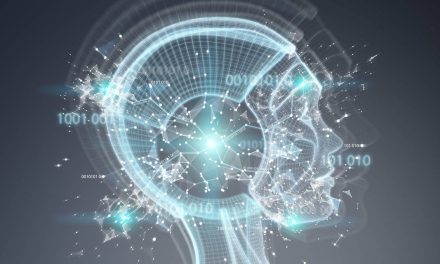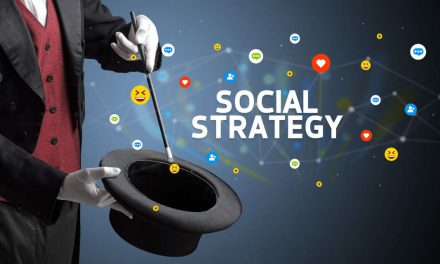This is part 1 of a four-part series about AI. If you’d like to read the rest of the series, subscribe here to be notified as it comes out over the next few weeks.
By Jack Cumming
Lately, it seems like the world is aflame with artificial intelligence fever. The fever is such that nearly all vendors now suddenly declare their products to be driven by AI. The idea is that the buyers may not know what that means, or how it matters, but they’ll just buy it anyway. That’s crazy.
Then there’s the fear crowd. AI will take over the world. AI will drive humans to extinction. At a minimum, AI will take away jobs and increase homelessness and poverty. Once anxiety takes over, people stop thinking rationally. That’s true of consumers. It’s also true of business decision-makers. Even the AI developers, notably Elon Musk, fear its learning loops. They cry out for safety, though it may just be that they fear mistakes from their own development errors.
The Obvious Precedent
We’ve been through this before. Many of you remember when the internet was new and we were trying to figure out whether it was good or not. I remember talking to my aging uncle about the internet, when he interrupted: “The internet has something to do with pornography, doesn’t it?” Well, yes, something.
AI now is like the internet was then. It’s big. In fact, it’s huge. It can’t be ignored. But, it’s only a tool. It’s our tool. It will always be created by and used by humans. It’s not human. It doesn’t have feelings. It doesn’t get angry. It can mimic emotion, but it’s not emotional. It just does what it’s trained to do, and it can do that very well and very reliably.
AI at Its Best
We already know AI from the navigation system in our cars. The system shows a route, but it doesn’t get annoyed if we take a different turn and change the route. When my wife used to navigate us with a map in her hand … well, let’s say that navigational AI has kept our marriage harmonious. Our car’s AI doesn’t take us to hell and perdition; it takes us to our destination.
When navigation came to cars, it wasn’t always right. Sometimes it took us the long way around. Sometimes it directed us to roads that didn’t exist. One driver, at least, was known to have driven through a barrier to her doom in a gulch where once a bridge had stood. Navigation then wasn’t entirely safe, but it was deployed everywhere, and it improved. Now, even traffic hazards are reported in real-time. It has enhanced the experience of drivers everywhere.
What’s the Fuss?
AI is not new. What’s new is enhanced computing power that enables more elaborate calculations. That combines with increasingly massive troves of data to make possible economies. We’ll take a senior living example.
Let’s say that you want to optimize food ordering to minimize waste and lower cost. With point-of-sale ordering, you can track every transaction. You could have done this earlier by hand, but POS makes it automatic and much easier.
With tracking, enhanced by AI and the Internet of Things, you may find that lasagna is popular while curried lamb is less so. If tracking resident ordering patterns allows you to order just the right amount of each so that no resident is disappointed but so there is near zero waste, that’s a plus. The old method of using ordering mistakes for leftover dishes will persist but should be less needed. AI can even help you to optimize leftovers by running the math for you and making suggestions.
A Gifted Assistant
That’s all it is: a very gifted analytical assistant by your side to help you to be more effective. Of course, though, there are some jobs that AI renders obsolete. Analysis requires commonsense thinking combined with clerical skills to assemble and organize the data. AI can help with commonsense thinking if it is programmed with the right principles, but it primarily replaces clerical tasks. That frees people up to perform more interesting tasks instead.
In the early years of computerization, we often spoke of garbage in, garbage out. That’s still true with AI, but the massive data and computing capabilities of today’s computers mean that more garbage can be swallowed, and the garbage out can be more elegantly presented. Caution is advised.
The Microsoft Challenge
Now Microsoft wants to dominate AI. After all, Microsoft Office tools — Excel and more — are the favorite tools for amateur analysts. Enhance them with AI capabilities, and it might be a great advance. In the past, though, Microsoft has put corporate advantage before customer value or public service. An advance like AI calls for people who embrace it as a cause to serve humankind.
If Microsoft and its CEO Satya Nadella only see corporate advantage in their current triumph, others are likely to surpass them. It would be disastrous if the opportunity were lost to the kind of competitive turmoil that kept fax machines from communicating with each other until just before the product lifecycle ended.
The future looks bright. For MI (magical intelligence), click here. Stay tuned for more articles about AI in this series.
This is part 1 of a four-part series about AI. If you’d like to read the rest of the series, subscribe here to be notified as it comes out over the next few weeks.


![Artificial Intelligence: It’s Not Magic [AI Series, Part 1]](https://www.seniorlivingforesight.net/wp-content/uploads/2023/11/114064724_m_normal_none.jpg)


![Practicalities of Artificial Intelligence [AI Series, Part 3]](https://www.seniorlivingforesight.net/wp-content/uploads/2023/12/208933073_m-440x264.jpg)
![Senior Living’s Great Leap Forward [AI Series, Part 2]](https://www.seniorlivingforesight.net/wp-content/uploads/2023/12/209190094_m-440x264.jpg)

